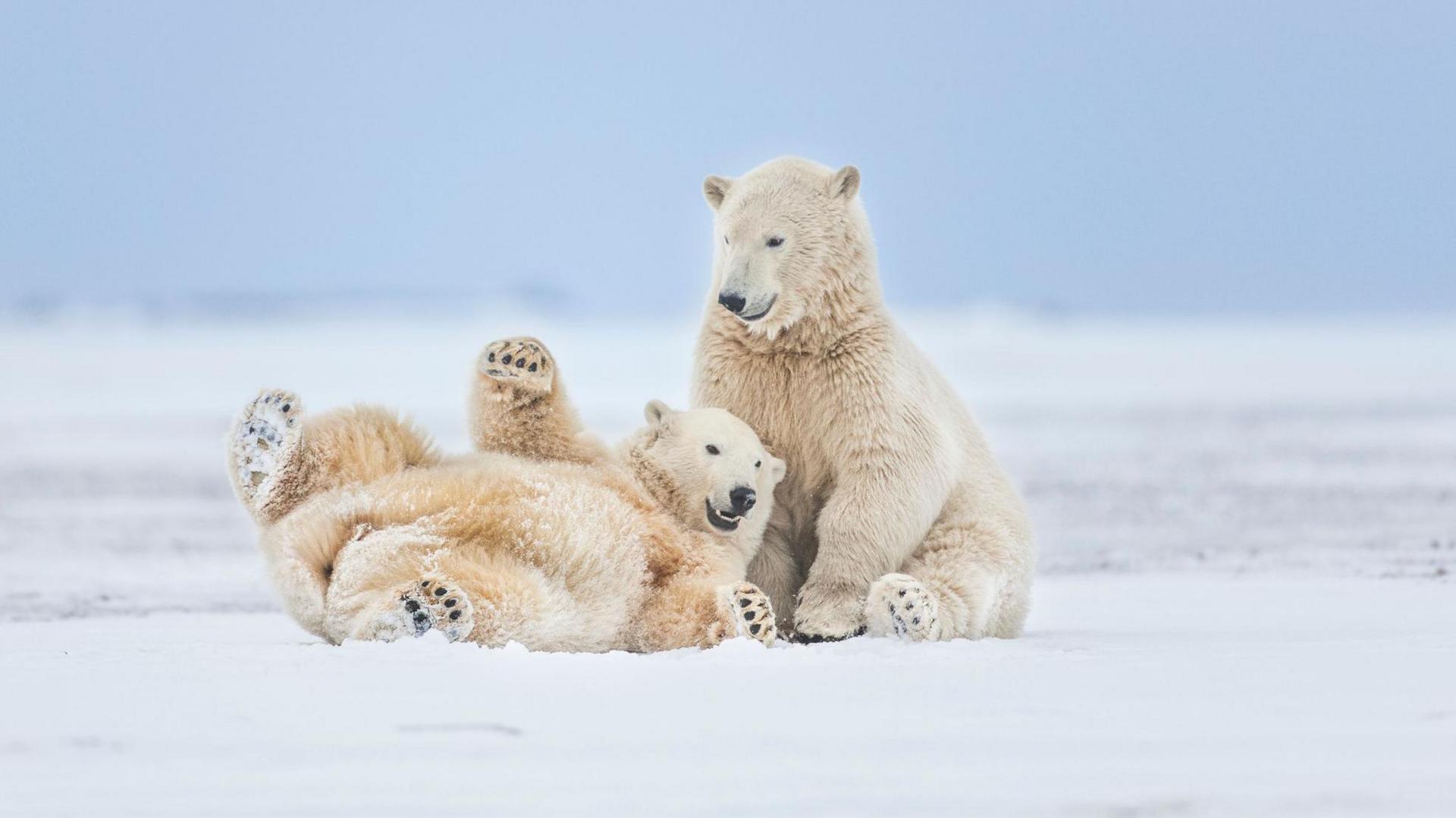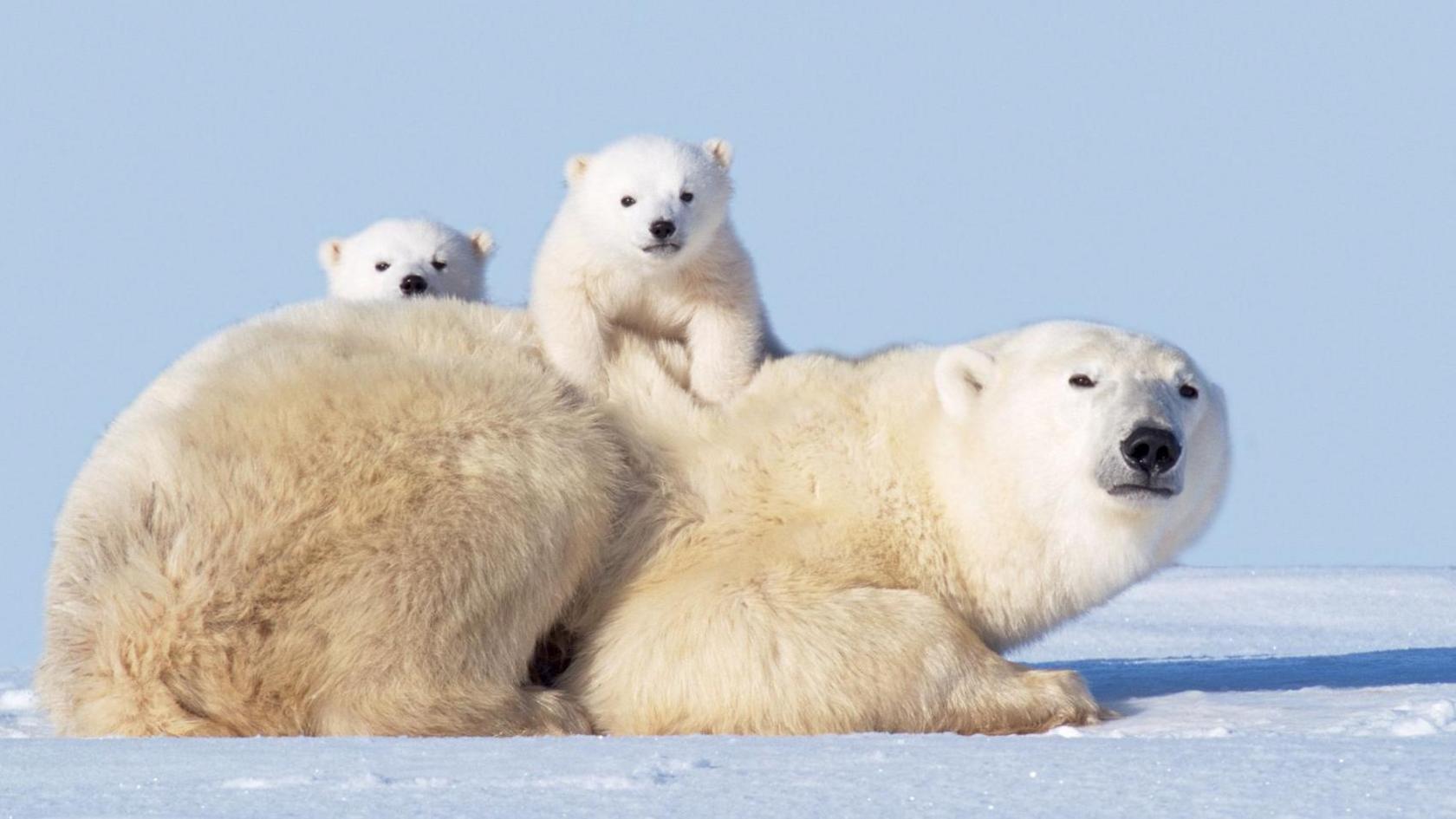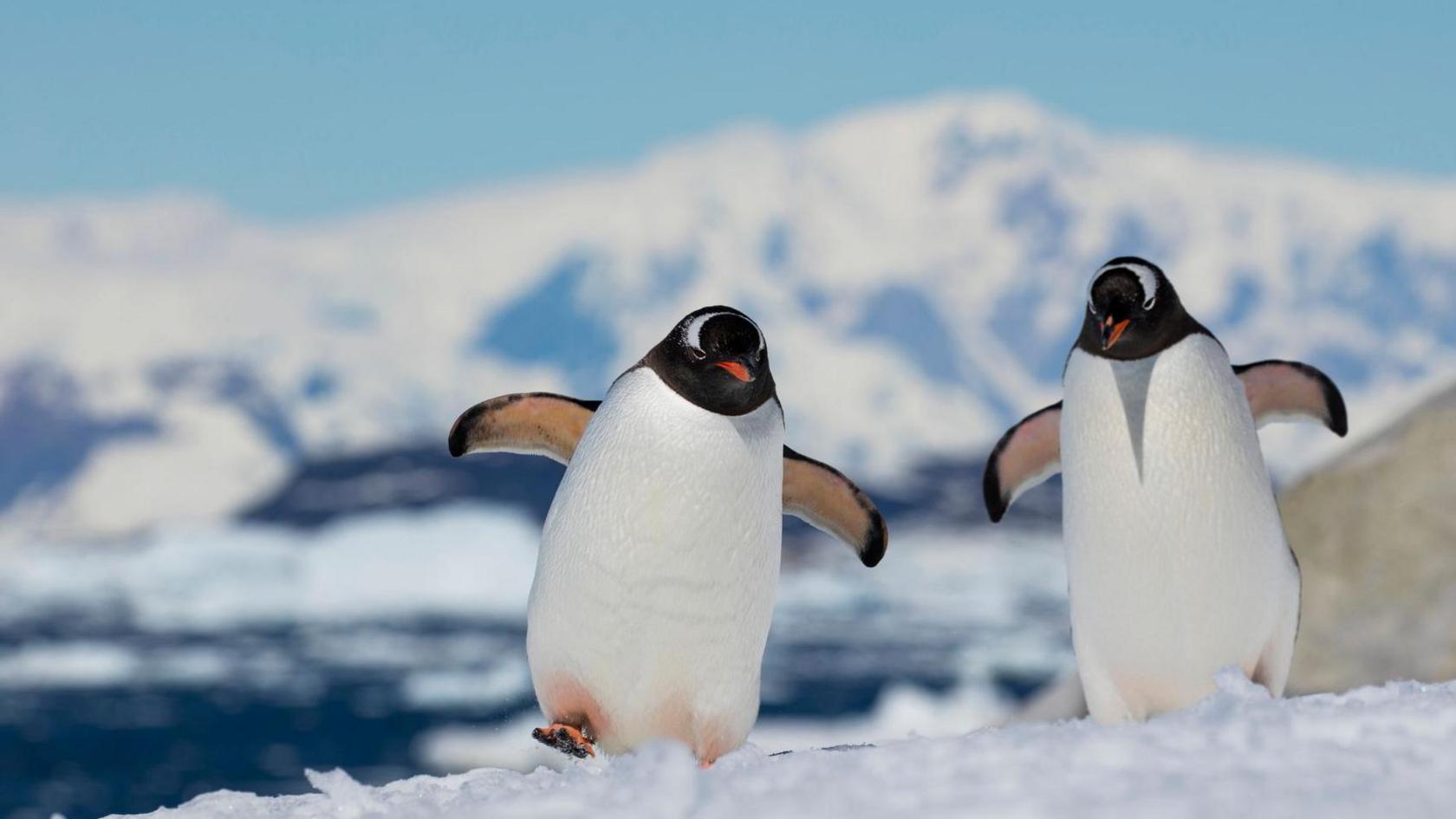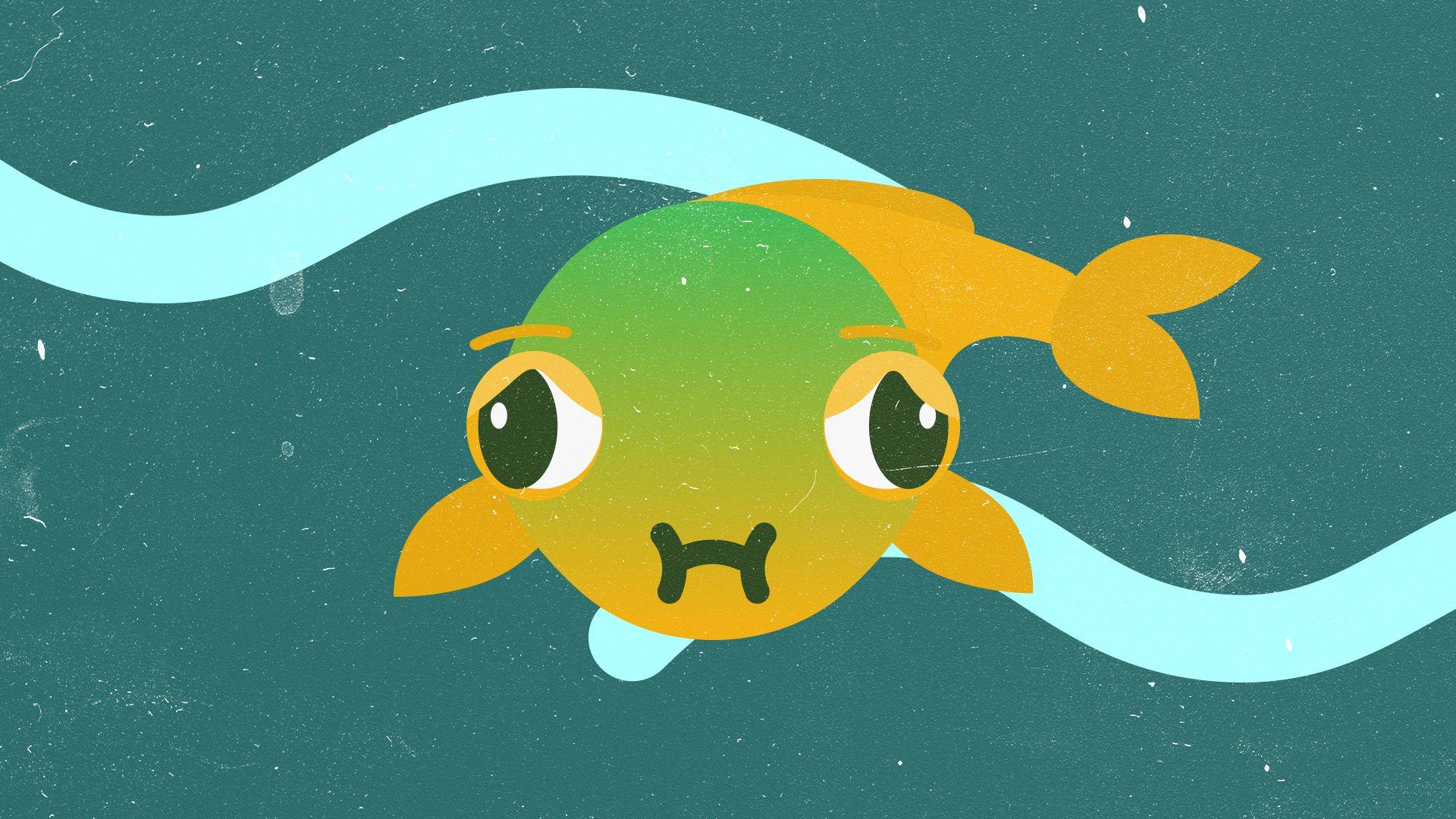Polar bears are 'greasy' - here's why

Slipping and sliding is easy if you're greasy!
- Published
Polar bears are able to survive in some of the world's harshest climates.
Now scientists think they know how they move around the ice without it getting stuck to them all the time.
The secret? Well, it's the grease on their fur.
That's just the tip of the iceberg, as the discovery, which is published in the Science Advances journal, could be used to create more anti-icing products and to help make better skiing and snowboarding equipment.
More bear-y good stories
- Published18 June 2022
- Published29 December 2023
- Published19 April 2021
How did scientists discover the greasy polar bear fur?

It's paw-sitive news, as we can learn more about how to make safer anti-icing chemicals
It all came down to some detective work, which involved collecting hair from six polar bears in the wild.
The researchers found the sebum, or grease, on the hair was the important thing protecting it.
The grease is made up of cholesterol and fatty acids, which makes it very hard for ice to attach to their fur.
They measured things like how well the ice sticks to fur, whether water can be shed before it freezes, and how long it took for a drop of water to freeze at certain temperatures on a surface.
They then compared the polar bear hair with human hair and two types of specialist 'ski skins' - strips that attach to skis and snowboards so they don't slip backwards.

Gentoo penguins also have anti-icing feathers
Julian Carolan, from Trinity College Dublin's School of Chemistry and the AMBER Research Ireland Centre, co-wrote the journal article.
He said: "Unwashed, greasy hair made it much harder for ice to stick. In contrast when the polar bear hair was washed and the grease largely removed, it performed similarly to human hair, to which ice sticks easily whether it is washed or greasy."
So the greasier the hair the better!
This isn't the first time animals living in polar habitats have inspired humans to get de-icing.
Scientists also discovered the feather structure of Gentoo penguins have anti-icing properties.
More amazing Newsround stories
- Published6 days ago

- Published28 January

- Published6 days ago
